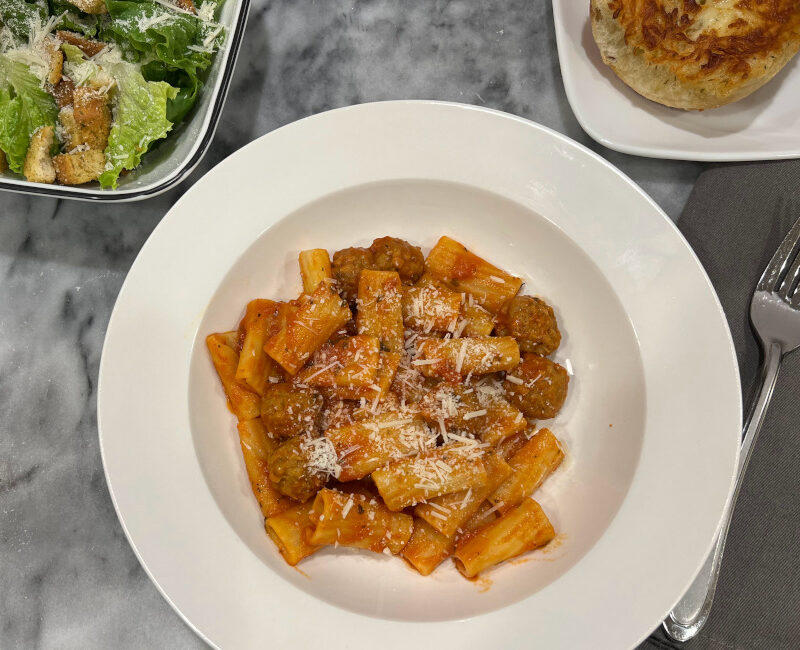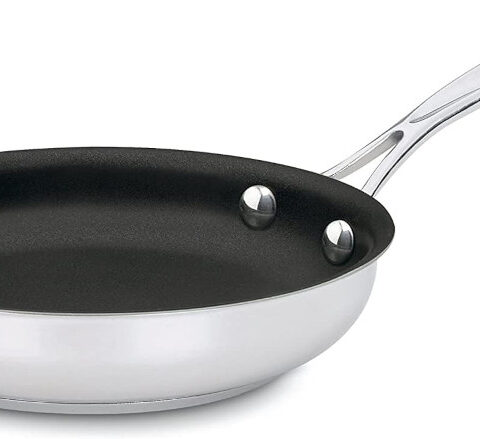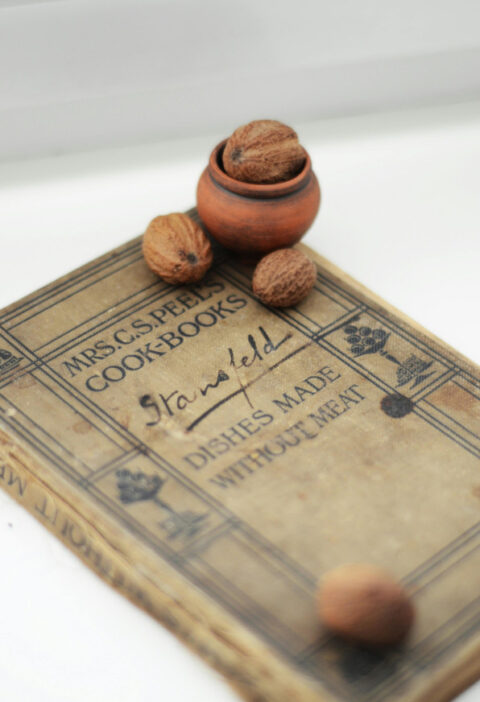This post may contain affiliate links. Learn more here.
Elevate your pasta with this simple 5-step Italian mantecare technique.
I was first introduced to this technique by a friend who sent me this Chowhound video:
Once I tried this technique, I never turned back. You will find it incorporated in so many of my pasta recipes like:
- Ravioli with Meat Sauce
- Rigatoni with Meatballs
- Chicken Alfredo Recipe
- Pecorino Romano Pasta with Chicken
- Pesto Pasta with Chicken
- Chicken Sausage Pasta Recipe
- Fettuccine Alfredo
What is Mantecare?
Traditionally, mantecare refers to the process of making risotto. It is also a technique used for saucing pasta. The term mantecare represents the method of making a dish creamy. Also, each type of pasta has a different texture to allow sauces to adhere in different ways. The mantecare technique helps bring the pasta and sauce together in a way that simply topping pasta with sauce doesn’t.
Why Mantecare?
I was sold the first time I tried this method. And I have been incorporating it into every pasta dish, old and new, that I’ve made since. Here are a few reasons why I love the mantecare method:
No more watery pasta
Have you ever made pasta, topped it with sauce, and then noticed watery sauce puddling around the edges when you sat down to eat it? Watery sauce will no longer happen with the mantecare method. It may seem counterintuitive to add water to the pasta and sauce to make it less watery but it works!
Even sauce distribution
No more poorly sauced pasta noodles. Gone are the days of all the pasta in the middle of the plate getting all the sauce while the pasta around the rim sits naked and exposed. Pasta noodles are designed to allow the sauce to stick (or not stick as much). The fluted design of a penne or rigatoni noodle is not just for looks, it serves a purpose. The starch from the pasta water helps the sauce adhere to the textured surface of the noodles as intended.
Flavor incorporation
This technique incorporates all of the flavors together and evenly. Every delicious bite is now the same. The butter, oil, and cheese additions found in this method add a lot of creaminess and flavor, too. However, you don’t necessarily need to add all of that fatty goodness to elevate your dish and get that silky finish. You will notice an improvement in flavor and texture just by following steps one and two below compared to just putting sauce on top of pasta.
Make the most of what you have
This method uses some of the leftover pasta water instead of sending it all down the drain. The same goes for the sauce. Instead of having sauce left over that can go to waste, all of the sauce will get mixed in with your pasta.
How to Mantecare
Not all mantecare steps are the same. And that is okay. Here are my basic mantecare steps:
- Step 1 – Add pasta to sauce. Then, give it a stir. In some cases, the sauce gets added to the pasta. One example is my Chicken Alfredo Recipe.
- Step 2 – Add pasta water. Add a scoop, or splash, or two of pasta water to the pasta and sauce. Toss or stir a few times. Depending on what you’re making, you may wish to stop here. For example, if you’re making my Chicken Alfredo Recipe, which already has a lot of butter and cheese, just adding the pasta water is really enough, in my opinion. You may also choose to stop here for a slightly healthier option or dietary preferences.
- Step 3 – Add butter. After the pasta water, turn off the heat and add a tablespoon or two of butter. Toss or stir a few times.
- Step 4 – Add olive oil. After, or at the same time as the butter, add a nice-sized drizzle of olive oil to the pan. Toss or stir a few times.
- Step 5 – Add cheese and herbs. Then, give the dish a quick, final stir. This step is optional, in my opinion. Similar to my note in Step 2, if the dish already has plenty of cheese or you would prefer not to add it, you don’t have to.
Mantecare Tools
Here are some tools I have handy when it’s time to mantecare pasta.
- Olive oil dispenser – I always have my olive oil jar next to the stove for the quick drizzle step.
When my pasta and sauce are ready at the same time, I don’t bother draining my pasta. Instead, I move my pasta directly from the pasta water to the saucepan using these tools:
- Slotted spoon – For moving short pasta like ravioli, rigatoni, and penne from the pasta water to the saucepan.
- Pasta tongs – For moving long pasta noodles like fettuccine, spaghetti, and linguine from the pasta water to the saucepan
- Wooden spoon – When I’m not using pasta tongs to toss and combine, I’m using a wooden utensil to stir.
- Ladle – I use a ladle to put one or two scoops from the pasta water pan in with the sauce and noodles.
When my pasta is ready well before my sauce, I prefer to drain it. These are my pasta-draining tools:
- Oven mitts – I usually just put the lid on the pasta pot to pour the water out and drain the pasta. I use one mitt to hold the hot pot handle and one to hold onto the hot lid.
- Glass measuring cup – I drain a cup or so of the pasta water into a big measuring glass, before draining the rest of the water out over the sink. From here, I pour a splash or two into the pasta and sauce.
I hope you’ll give the mantecare method a try when making your next pasta meal. Even if you just try steps one and two. Let me know what you think of this method in the comments below!






